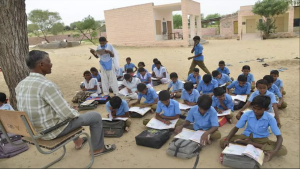India’s education landscape is witnessing a significant shift, with nearly 50% of students now enrolled in 4.5 lakh privately managed schools, making it the third-largest school system globally. This surge is driven by low- and middle-income families seeking quality alternatives to government schools. The ‘State of the Sector Report on Private Schools’ by the Central Square Foundation and Omidyar Network India highlights the urgent need to improve learning outcomes in these institutions, which contribute approximately Rs. 1.75 lakh crores to the economy.
While, the impact of private education on public schools in rural India has been understood to be largely negative, there have been mixed reports. This report suggests that private high schools have increased stratification by gender, income, and socioeconomic status, drawing high-performing students from affluent families while leaving public schools unaffected academically. Contrary to expectations, despite concerns, the presence of private schools has not harmed students who remain in public institutions.
The Annual Status of Education Report (ASER) by Pratham suggest a different perspective. It underscores the uneven recognition of the need for educational reforms across states. While private schools are flourishing, significant disparities in resources and outcomes remain, particularly in rural areas. Finally, the rise of low-cost private schools in urban slums and rural villages is revolutionizing education for the poor, showing better performance than public schools despite minimal support (ASER). These schools, run by educational entrepreneurs, offer a sustainable solution to improving educational standards, provided that burdensome government regulations do not stifle their growth.
While private education is gaining momentum and reshaping the educational landscape, it is crucial to address the accompanying challenges to ensure equitable and quality education for all and its impact on public school education that is likely to be detrimental towards improving learning outcomes.
